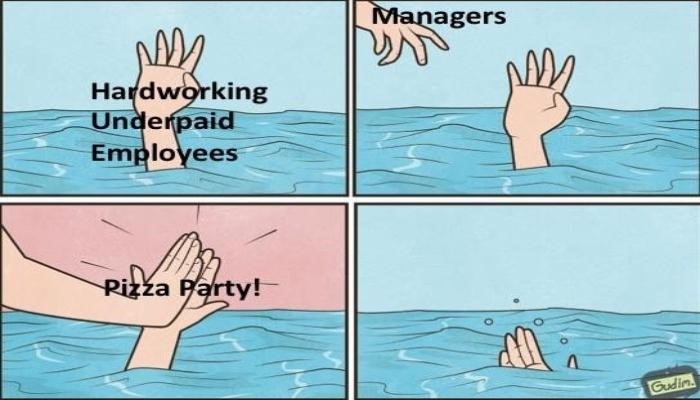Many employees feel that good managers are rare. It is a shame that the most important relationship that an employee has in the organizations is failing them.
It is simply unnerving to look at the common bad experiences of employees with their managers. Why is it unnerving? Well there is the simple fact that so many people are feeling unhappy about their situation. In addition, the science tells us that the employee’s relationship with their managers is the main factor in the level of that employee’s engagement. Even though employee engagement is a complex issue, one of its major causes can be pinned on ineffective managers.
But how can managers affect how engaged the employees are? Looking at some of the frequent complaints that point to a lack of engagement, this becomes easier to envision. In the state of to-day’s workforce, the majority of employees feel disengaged. In fact, it has become an epidemic that we need to solve.
Gallup has recently coined the phrase The Manager Experience, and published extensively on the impact that managers have on the employee experience. Of course we at Effective ManagersTM have been singing from this song sheet since our founding. Let’s have a closer look at how good managers drive employee engagement, and why so many managers fail at it:
The Role of a Manager
Being an effective manager means juggling many tasks and accountabilities. We have distilled the role of a manager into five key activities, which are:
- Plan
- Do
- Set context and boundaries
- Delegate work
- Establish feedback loops
All of these activities and the manager’s success at performing them, directly impact employee engagement, which then drives team and organizational performance.
It’s clear to see why a good manager would have better results performance-wise. When the manager ensures their team works like a well-oiled machine, there aren’t going to be too many performance-related mistakes.
However, the managers also must keep their teams in mind, which means taking their sensibilities, strengths and weaknesses into account.
How Managers Fail Their Teams
It is where managers often encounter problems. Managers are rarely aware of the fact that their work affects employee engagement as well as performance. An employee might be performing great: working hard, staying longer, and producing some good results with all that effort. However, the fact that they’re working so hard does not mean they’re engaged and happy. Employees quit managers, not jobs – especially when they don’t feel appreciated.
Part of establishing a feedback loop is ensuring that team members are receiving recognition for their efforts. Unfortunately, we frequently see managers taking shortcuts to provide this recognition, and the employees see right through it. Take the infamous “pizza parties,” and employee reactions to receiving this type of reward instead of actual recognition. Here are some actual quotes form the social media channel where the above cartoon was published:
- “They throw a pizza party. Then they ask why everyone is unhappy and think 80-100% turnover rate is normal.”
- “Had a huge meeting. We ended the year with 32 million profit. Managers are throwing a dance to say thanks; no raises though.”
- “With our company under new management, I went from profit sharing to a movie theater gift card. Thanks.”
With thanks to Gudim Anton for the original art which appears untold times in various forms on social media. I found this version and the comments quoted above on Imgur.
Improving Employee Engagement
By learning about the five requirements of active managers and how manager work affects employee engagement, managers can begin to move away from harmful practices that destroy it. With the methodology developed by Effective Managers, you can ensure that your managers have a good understanding of their accountability and how their work impacts the entire organization.
The 5 Requirements of Effective Managers lays out the foundational five things that a manager needs to do to be effective. It is only by doing their managerial leadership work can managers expect their employee to be engaged and focused on the right work. Of course, the 5 Requirements are the baseline. There are many other things that need to happen as well. This article, 13 superlative tactics for radiant employee engagement is a great overview of the do’s and don’t of employee engagement. All too often organizations take a simplistic approach to improving engagement. Yes, “throw a pizza party” is one example. That simply won’t do it!
This blog on our approach to accountability, the Effective Point of Accountability will take you on a deeper dive into the importance of accountability and authority. A clear accountability and authority framework will not only improve organizational performance, it will also improve the processes of delegating meaningful work and rewarding employees with proper recognition through the feedback loop. Ultimately, that enhances the happiness of workers, increases their engagement, and lowers employee turnover rates.

Download a complimentary copy here: Empowerment 4.0 Whitepaper
Dwight is leading a 7-week Flevy Executive Learning (FEL) program on effective management called Empowerment 4.0. Learn more about this course here.
Learn More
Or check out this free webinar for the high level overview. Sign up for the free webinar here.
We can help you create and sustain a high performance organization.
You can also check out our Engagement Infographic here. Or email me to set up a call.






